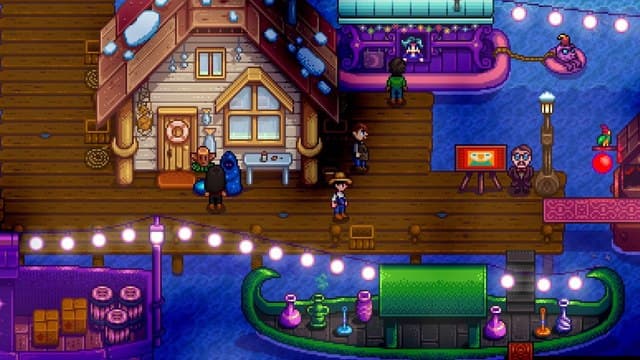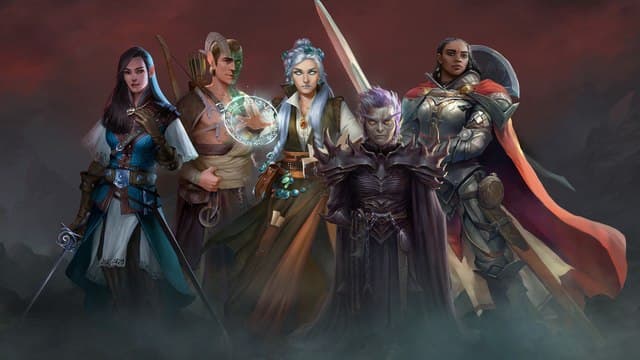An urban designer is the one who plans out small concrete parks with knee-high benches and various sets of railed stairs. These lead to various sidewalks — maybe to a subway station or parking garage. To a designer, these environments are designed for foot traffic and city flow. To skateboarders, however, these areas are hotspots that afford an endless possibility of tricks and lines. Stairs are no longer stairs; they’re obstacles. Rails aren’t meant for hands; they exist to throw one’s board and body down them. Meanwhile those benches are now better suited to ollies and grinding. Skateboarders see cities and urban structures differently than most individuals. There’s the possibility for a trick on every curb and around every embankment. The Tony Hawk’s Pro Skater series (being brought back this fall in the form of a remastered collection of the first two titles) takes this idea and thrusts it into a world of skater utopia dream logic where, in fact, every urban structure is built with skaters in mind, rather than usual city-goer.
I wanted to know more about what sets this world apart. So I asked a Department of Transportation director who has worked in urban development and road development in Georgia for over 20 years (and chose not to share their name) about what they think of skateboarders’ relationships with what they design. Then I had them watch me play the Los Angeles level from Tony Hawk’s Pro Skater 3, with the idea of pointing out how and where its facsimile of a planned urban setting diverts from the real into the unreal.
Planning public spaces is an often all-consuming task. And, as it turns out, urban planners rarely think of how setting up a rail in a specific way might afford Lizard King a mind-blowing grind. I asked the DoT director directly about how public spaces are arranged and designed.
You May Also Like:
- The God of High School is Good Ol’ Fashion Anime Tournament Fighting
- Silent Hill’s Shambling Corpse Wanders Into Dead by Daylight
- Bayonetta 3 Has Not “Been Canceled by Any Means,” So Neither Are My Dreams
“When planning public spaces, we consider all users: pedestrians, cyclists, and motorcyclists,” he said “Within these users, the needs of disabled persons often dictate how access is arranged and how the spaces are specifically designed.”
Ramps and other alternatives to stairs are placed to afford an ease of access to all users.. Skateboarders often take advantage of these varied spaces, but obviously they aren’t in the forethought of an urban planner. In fact, and unsurprisingly, urban planners are sometimes asked to design spaces in certain ways as to prohibit or keep skaters from using said areas.
“Skateboarders are not typically considered in planning, but benefit from the varied access provided for others,” the director added. “Sometimes, however, designers are asked to include features that deter skateboarders from using hardscapes for play.”
“Hardscapes,” in this case, refers to basically any flat, paved surface — from sidewalks to driveways. Nubs are also often added to rails to deter grinding, but skaters are a tenacious bunch. They often just use these features as new obstacles to overcome and do tricks around. Sometimes they’ll just shave off the nubs and bend the designed spaces directly to their shreddng whims. Tony Hawk’s Pro Skater just imagined a world where that was already the case. Every in-game structure is designed to be skated on. Every rail is perfect, every embankment leads directly into the perfect line and, for whatever reason, there are literal kicker ramps and quarter pipes built into the nooks and crannies of every neighborhood in the series. Not to mention skateboards can shred on snow and dirt as well as they can on concrete. Thank you, Mr. Hawk.

But what’s often compelling about the series beyond just how ridiculously fun it is (and its of-the-era soundtracks), Tony Hawk’s Pro Skater imagines a reality where the metal and concrete urban decay under capitalism never crumbles. It takes new shape and becomes revitalized in purpose through becoming a skateboarding haven. There are no cops or external forces to push against such initiatives, either. Well… Except for Officer Dick. In the view of the Tony Hawk games, the only good cop is a skateboarding cop. (Even though we all know there are no good cops; even their kickflips are bad!)
The DoT director I had the pleasure of speaking to has a warmer view on skateboarding than I expected, too. When I asked about how the Tony Hawk games revitalize abandoned developments (and how this mirrors what happens in real life), they were pleasantly surprised by the notion.
“In my view, it is good for neglected spaces to be used creatively,” they said. “Cities, landowners, and law enforcement may not agree because of potential liabilities, trespass concerns, and property damage.” But it is better to ask forgiveness than permission and there is so much wasted, rotted concrete space under the forgetful maw of capitalism, so why not take it back? Where the Pro Skater games see these spaces as endless possibilities for million point combos, the reality is more complex. To take these places back in the name of skateboarding often means only doing so with extremely hard work — usually after dark, or when no one is looking. Tony Hawk’s Pro Skater does so when everyone is looking. In the series’ skater’s dream of reality, there is never any pushback. Anywhere and everywhere becomes a place of enjoyment.

When everywhere becomes a skatepark, the notion of reality and properly designed urban spaces are no longer of importance. I can’t rake in a one million point combo in a Target parking lot, so Tony Hawk’s Pro Skater looks at what might start as a normal urban area. Then it adds a skatepark to it by forgoing the real, often risky labor involved.
The Los Angeles of Tony Hawk’s Pro Skater 3 is a small slice of the L.A. urban sprawl. It resembles everywhere and nowhere all at the same time. The level is centered around a concrete urban center, home to various (funny) takes on modern 3D art pieces (big cubes, big red balls, etc.). In grounding the level as a city, it resembles something familiar. Look closer, however, and you’ll see how there are the makings of a skatepark in every inch of it. Kicker ramps, half pipes, flat rails, crooked rails, bowls, and the like all hold sway over this skater-paradise version of L.A.
I played through this level and shared my screen with the county DoT director. Between the laughs and bewilderment (Pro Skater is still very much a joy to this day) they found it interesting how the level was layered. Even they thought it feels like a real place (as much as Tony Hawk game can) until one looks at it as a playground of opportunity.

“I have a sense that it is a real urban space, but enhanced and built upon for skateboarding,” the director elaborated. “Of course the battered walls, ramps, and cornices are exaggerated both in number and height. This urban planner would not have a job for very long.”
What did last long was the combo I chained together as I showed my subject around the level. I broke the high score. They weren’t impressed. The urban structures of the Tony Hawk series — like the skateboarding at its core — are built and founded in reality. But they are heightened into the unreal by allowing these urban spaces to be built with only skaters in mind. The idea that every curb and bench exists in conversation with one another in the sole notion that these objects exist as stepping stones to the world’s most unreal line and high score. The heightened unreal environments give way to the heightened and unreal skateboarding on display in the Tony Hawk’s Pro Skater series, and when the skaters fall, they always get up again — A-okay.
That is, uh, not how things work… But that doesn’t matter when it’s 2 a.m., Alien Ant Farm’s cover of “Smooth Criminal” is blasting in-game, and you’re lost in a fugue state of combo tunnel vision. You’re just a few points away from your highest score yet after all.


